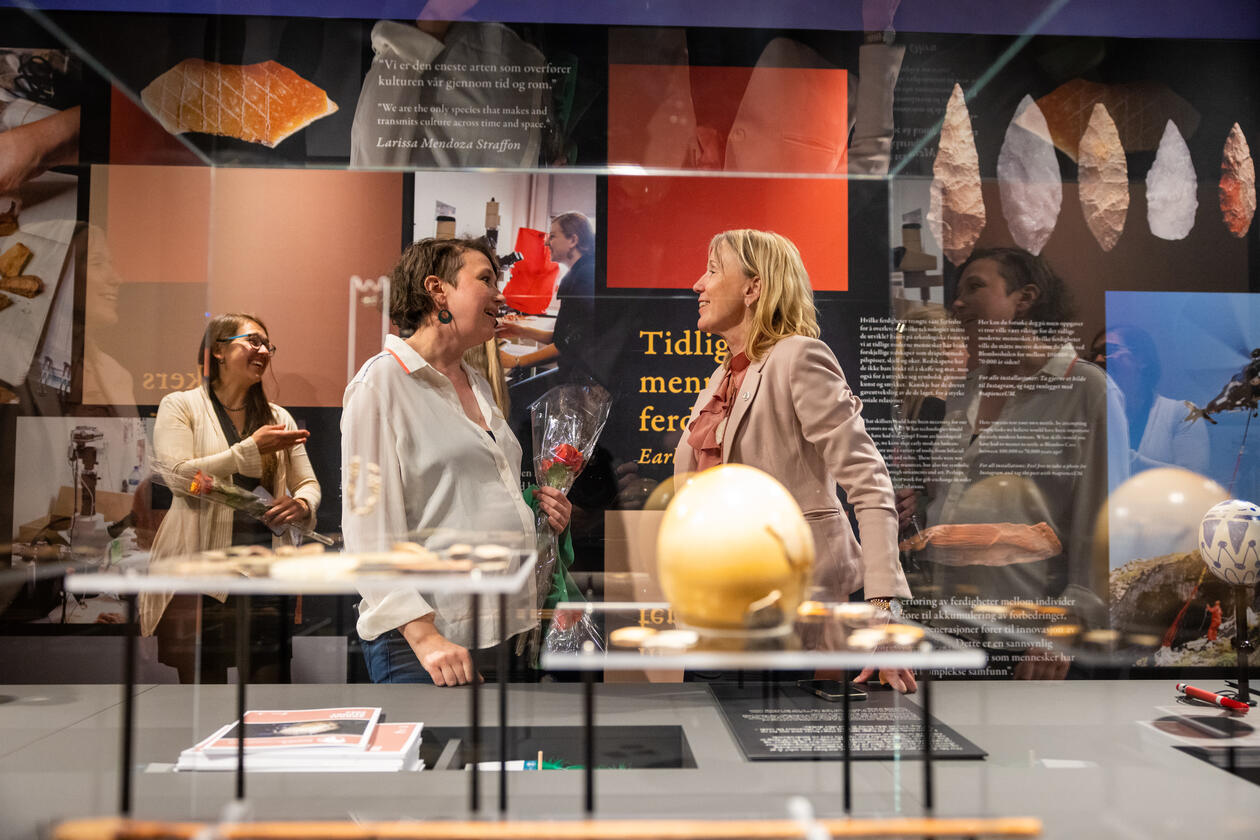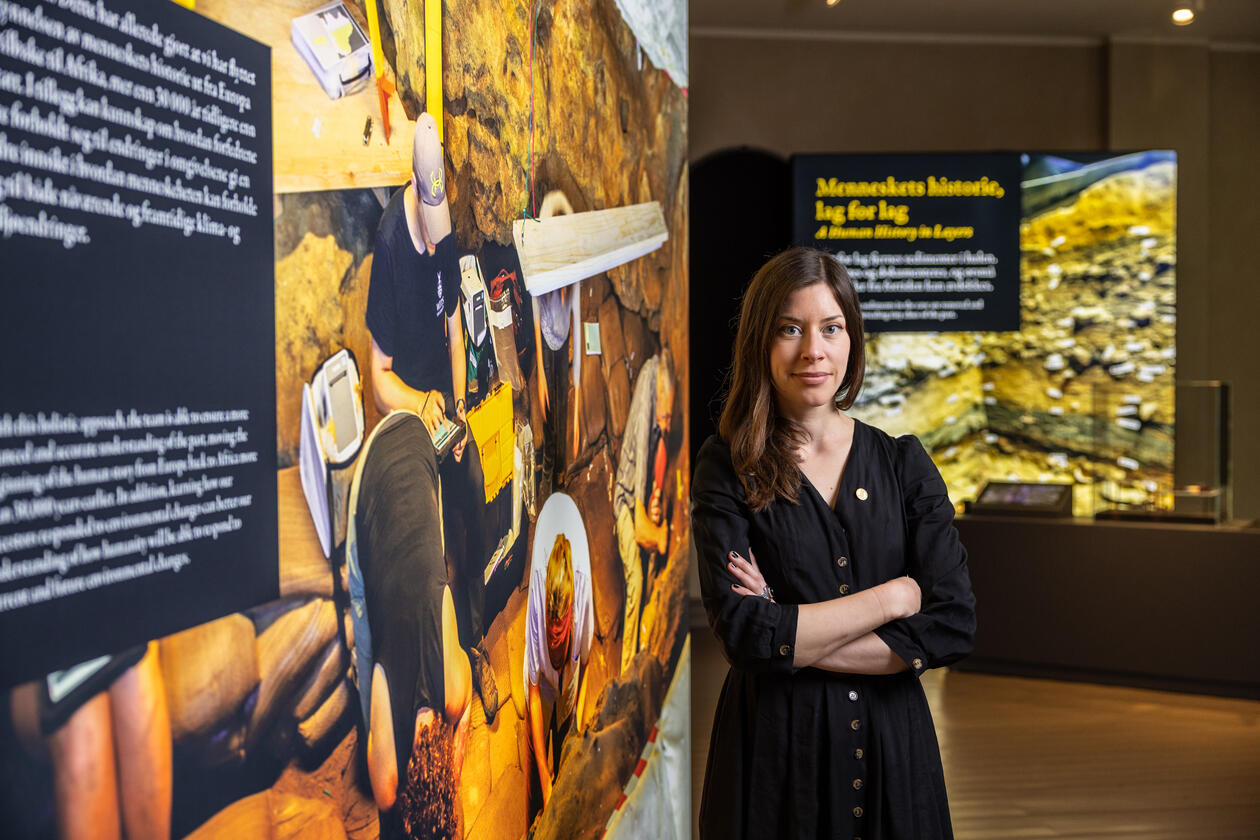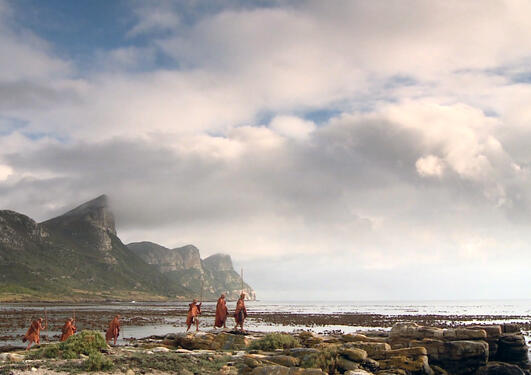Showcasing Fascinating Discoveries about Early Modern Human Behaviour
The SapienCE Early Human Behaviour Exhibition offers a unique opportunity to explore fascinating discoveries and insights into the behaviours of our early, shared, ancestors.

Main content
"I would like to express my gratitude to the University Museum of Bergen for creating and hosting this exciting and informative exhibition, and for providing a platform for us to share our research with a wider audience.”, Professor Christopher Henshilwood, director of the Centre for Early Sapiens Behavior (SapienCE) says.
35 years of archaeological research
Henshilwood says that the exhibition is a testament to the remarkable achievements of the diverse team and researchers in SapienCE and their dedication to understanding the origins of early cognitively modern behaviour. It is also confirms that the origins of us all are in Africa.
“I am proud to say that this exhibition also represents the culmination of 35 years of archaeological research in South Africa and our multidisciplinary team of experts. Our goal has been to shed light on the complex and fascinating evolution of early Homo sapiens”, Henshilwood says.
Featuring rare artefacts, interactive displays, and multimedia installations, the Early Human Behaviour Exhibition provides a window into the world of our early human ancestors, see the world’s oldest drawing, and meet the team behind it all. Visitors will journey through time, from the emergence of Homo sapiens in Africa over 200,000 years ago to the present day, learning about the social, cultural, and technological developments that shaped our evolution.
Showcases what it means to be human
Visitors can experience a reconstruction of the ancient landscapes and habitats that our ancestors inhabited and get rare insights into their daily lives. In addition, visitors will have an opportunity to look behind the curtain at the processes involved in research and knowledge production.
The South African Ambassador to Norway, H.E. Delores Kotzè was in Bergen for the opening. She says that the exhibition gives her a broader perspective on what it means to be human.
“The best part for me is that this exhibition is based on interdisciplinary research which proves that humans are multidimensional.”
Rector at UiB, Margareth Hagen, says that she is very excited about the exhibition.
“I am extremely proud of the SapienCE team and their ground-breaking research. I hope many will visit this fascinating exhibition, which allows us to learn about our early ancestors and get a better understanding of how and when we developed into who we are today”,
Unique opportunity to follow the research process
The curation team from the University Museum, led by Åshild Sunde Feyling Thorsen, has interviewed SapienCE’s leading archaeologists in the field, climate scientists and psychologists to produce an exhibition that provides a comprehensive look at the origins of modern human behaviour, exploring key themes such as language development, tool-making, and social organization.
Thorsen states that close collaboration with the SapienCE team has given her a unique opportunity to develop an exhibition which allows the audience to get behind the scenes of scientific processes.
“I was lucky enough to follow the excavation team working in Blombos Cave for several weeks and document the work they are doing. With a camera, I was able to get close to the archaeological excavations and follow all the processes in this extensive research. . This means we now can showcase what happens during archaeological fieldwork at Blombos Cave in South Africa.”
The Early Human Behaviour exhibition at the University Museum in Bergen will be followed up by two further exhibitions in South Africa on the research of the SapienCE team.



